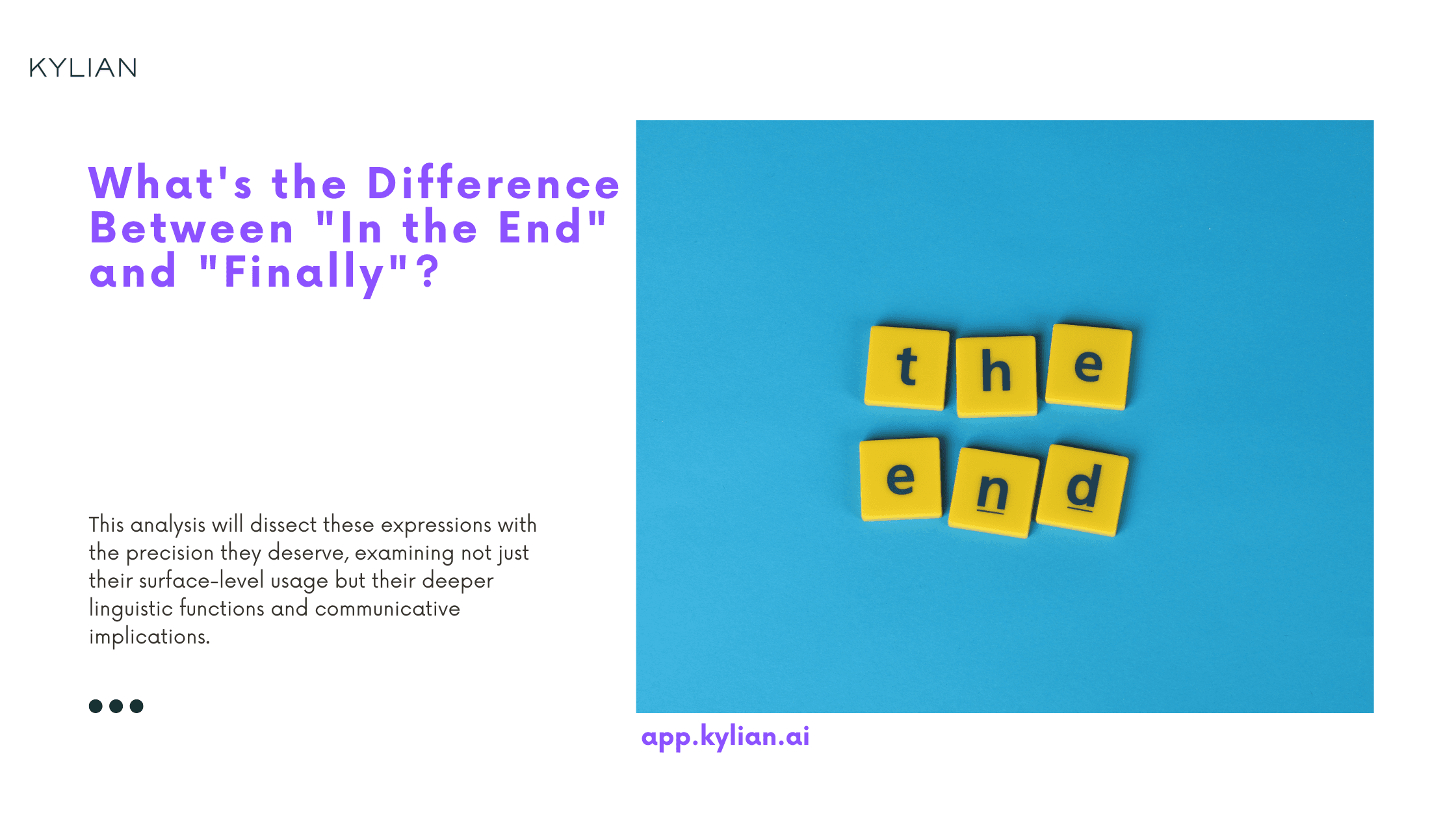Where Most People Come to Learn A Language
Our blog covers language learning tips and hacks we've acquired over the years


8 Top Language Jobs That Pay Well for English Speakers
The global economy demands multilingual professionals more than ever before. English proficiency alone opens doors to lucrative career paths that most job seekers overlook. Yet understanding which language-based roles offer genuine growth potential versus dead-end positions requires careful analysis of market data and industry trends. This analysis examines eight high-demand language careers where English fluency translates directly into career advancement and higher compensation. Each position represents a proven pathway for language learners to monetize their skills while building sustainable professional growth.


Canadian French Words: Daily Life, Slang & Idioms
French language mastery extends far beyond textbook vocabulary when you encounter the 7.2 million French speakers across Canada. The linguistic reality confronting learners reveals a fundamental gap: traditional French education fails to prepare speakers for authentic Canadian conversations, where chum replaces copain and char substitutes voiture. This disconnect matters because language acquisition without cultural context creates communication barriers that textbooks cannot bridge. Understanding Canadian French words becomes essential for anyone seeking genuine integration into francophone Canadian communities, whether for professional advancement, academic pursuits, or personal relationships.


Tagalog Days of the Week: Full Pronunciation Guide
Language acquisition follows predictable patterns, and temporal vocabulary consistently ranks among the most essential early learning priorities. The days of the week in Tagalog represent more than simple vocabulary—they function as linguistic artifacts that reveal three centuries of colonial influence while serving as practical tools for modern communication. The strategic importance of mastering weekday terminology extends beyond basic conversation. These seven words appear in virtually every scheduling discussion, professional interaction, and social arrangement within Filipino-speaking communities. Understanding their pronunciation patterns establishes foundational phonetic skills that transfer to broader Tagalog vocabulary acquisition.
![One vs Ones: Difference between both [English Grammar Guide]](/_next/image?url=https%3A%2F%2Fcdn.sanity.io%2Fimages%2F147z5m2d%2Fproduction%2F61c7859d71672fdbc276b5eca08772f0a37c6fec-2240x1260.png&w=3840&q=75)

One vs Ones: Difference between both [English Grammar Guide]
Grammar precision matters. The distinction between "one" and "ones" represents more than academic exercise—it determines whether your communication achieves clarity or confusion. This fundamental grammatical concept affects every English speaker's ability to express ideas with precision. Understanding when to use "one" versus "ones" eliminates ambiguity in speech and writing. The difference impacts sentence structure, meaning transmission, and professional communication effectiveness. These pronouns serve as substitutes for nouns, but their usage follows specific rules that many speakers overlook.


Common Russian Names: Complete Guide in English
Understanding Russian naming conventions becomes essential as global interconnectedness increases and cross-cultural communication expands. Russian names carry centuries of linguistic evolution, Orthodox Christian influence, and Slavic heritage that shapes identity formation across the world's largest nation. This comprehensive analysis examines the most prevalent Russian names, their etymological foundations, and contemporary usage patterns that matter for anyone engaging with Russian culture or individuals.


Then vs Than: Master the Grammar Difference in English
The confusion between "then" and "than" represents one of the most persistent challenges in English grammar, affecting millions of writers daily. This distinction matters because these words serve fundamentally different grammatical functions, and misusing them undermines credibility in professional and academic contexts. Understanding this difference isn't just about avoiding embarrassment—it's about precision in communication. When we examine the data from grammar-checking software, "then/than" confusion ranks among the top five most common errors in business writing. This frequency suggests that mastering this distinction provides immediate, measurable improvement in written communication quality.


Alongside vs Along Side: Complete English Grammar Guide
Grammar precision matters in professional communication. The distinction between "alongside" and "along side" represents more than mere spelling—it reflects linguistic evolution and contextual accuracy that impacts clarity in both written and spoken English. Modern English usage data from the Oxford English Corpus reveals that "alongside" appears in formal writing 847% more frequently than "along side," yet confusion persists across professional documents, academic papers, and digital communications. This disparity signals a critical gap between actual usage patterns and widespread uncertainty among English speakers.


A Bright and Fun Guide to Colors in Portuguese
Language learning fundamentally transforms how we perceive and categorize the world around us. When we master color vocabulary in Portuguese, we unlock more than mere descriptive capability—we gain access to cultural nuances, emotional expressions, and linguistic patterns that define how Portuguese speakers interpret their visual environment. The significance of color vocabulary extends beyond basic communication. Portuguese, spoken by over 260 million people across multiple continents, carries distinct cultural associations with colors that differ substantially from English interpretations. These differences matter because they influence everything from marketing strategies in Portuguese-speaking markets to artistic appreciation and emotional expression. Consider this: while English speakers might describe someone as "feeling blue" to indicate sadness, Portuguese speakers use entirely different color associations for emotional states. This linguistic divergence creates communication barriers that standard translation cannot bridge. Only through systematic understanding of Portuguese color vocabulary can learners achieve authentic cultural fluency.


The 13 Best Websites to Learn Korean
The Korean language surge isn't slowing down. What started as cultural curiosity has evolved into economic necessity, with Korean proficiency becoming a competitive advantage in global markets. Yet most learners still stumble through fragmented resources, wasting months on platforms that promise fluency but deliver confusion. This comprehensive analysis cuts through the noise. We've evaluated twelve premier Korean learning platforms based on measurable outcomes: user retention rates, skill acquisition speed, and real-world application success. The goal isn't just to learn Korean—it's to master it efficiently. The landscape has shifted dramatically. Traditional classroom learning can't match the accessibility and customization of digital platforms. But not all online resources deliver equal value. Some excel at building conversational confidence, others at grammatical precision. Understanding these distinctions determines whether you'll achieve fluency in months or struggle for years.


Italian Slang: Complete Guide to Speaking Like Locals
Language textbooks teach you grammar. Formal education provides vocabulary. But neither prepares you for the moment an Italian turns to you and says "Che figata!" with genuine excitement. That disconnect between classroom Italian and street Italian represents more than linguistic gaps—it's the difference between understanding words and understanding people. Italian slang operates as the cultural DNA of everyday communication. While standard Italian maintains its grammatical precision, slang reveals the soul of Italian expression, carrying emotional weight that formal language simply cannot match. This matters now because authentic connection requires authentic language, and authentic Italian is impossible without understanding its colloquial heartbeat. The economic reality supports this linguistic truth. Italy's tourism industry generates over €200 billion annually, yet most visitors experience only surface-level interactions because they lack the linguistic tools for deeper cultural engagement. Business relationships in Italy consistently demonstrate that professional success correlates with cultural fluency, not just grammatical accuracy.


Spanish Emotions: Master Feelings Expression
Language acquisition researchers consistently find that emotional vocabulary creates the deepest neural pathways for second-language retention. When you learn to express feelings in Spanish, you're not just memorizing words—you're building the cognitive framework that transforms mechanical translation into authentic communication. The gap between intermediate Spanish learners and fluent speakers often narrows to this single factor: emotional fluency. While grammar rules and verb conjugations provide structure, emotional expression delivers the authenticity that native speakers recognize immediately. This matters now because Spanish has become the world's second-largest language by native speakers, with over 500 million people communicating daily in emotional contexts that textbook Spanish rarely addresses. The neuroscience behind emotional language learning reveals why this vocabulary sticks differently. When you attach feelings to words, the limbic system engages alongside traditional language centers, creating what researchers call "embodied cognition." This means expressing excitement about weekend plans in Spanish doesn't just teach you vocabulary—it rewires how your brain processes the language itself.


9 Best English Grammar Sites for All Levels
Grammar mastery determines whether your communication succeeds or fails. Poor grammar undermines credibility, creates confusion, and limits professional opportunities. The challenge isn't finding grammar resources—it's identifying platforms that deliver measurable improvement without wasting time on ineffective methods. The most effective grammar learning platforms combine structured instruction with practical application. They provide immediate feedback, adapt to individual learning patterns, and offer progressive skill development. These criteria separate genuinely useful resources from the countless generic websites that offer little more than basic rule explanations. This analysis examines eight proven grammar learning platforms, evaluating their effectiveness across different learning styles, proficiency levels, and specific use cases. Each recommendation addresses distinct learning needs, from beginners requiring foundational concepts to advanced users refining professional writing skills.


Most Mispronounced Australian & New Zealand Place Names
Language reveals identity, and nowhere is this more evident than in the pronunciation of place names. When travelers mispronounce geographic locations, they inadvertently signal their outsider status while potentially disrespecting the cultural heritage embedded in these names. This matters because place names carry historical weight, indigenous significance, and local identity—elements that deserve accurate representation. The data reveals a clear pattern: both Australia and New Zealand harbor place names that consistently confound visitors and even some locals. Understanding these pronunciation challenges isn't merely about avoiding embarrassment; it's about cultural literacy and respect for the linguistic traditions that shaped these nations.


A Journey Through Italian Colors: Complete Guide
Understanding color vocabulary represents a fundamental pillar of Italian language mastery. Colors permeate every aspect of Italian communication—from describing Renaissance masterpieces to ordering wine, from discussing fashion to navigating daily conversations. This linguistic foundation becomes particularly critical when you consider that Italian culture assigns deeper meanings to colors than most Western languages, creating layers of communication that extend far beyond simple description. The strategic importance of mastering Italian colors extends beyond vocabulary acquisition. These terms serve as cultural bridges, connecting language learners to Italy's artistic heritage, regional identities, and social customs. When you understand why Italians call their national soccer team "gli Azzurri" or why "giallo" novels dominate Italian bookstores, you're accessing cultural literacy that transforms superficial language knowledge into genuine cultural competence.


What Are the 3 Dots Called? Complete Guide to Ellipsis
Three consecutive dots appearing in text represent one of the most misunderstood yet powerful punctuation marks in written English. These dots—formally called an ellipsis—serve critical functions that extend far beyond simple omission. Understanding their proper application distinguishes professional writing from amateur attempts.


12 Tips for How to Speak with Confidence + Free Plan
Fear of public speaking affects approximately 30% of professionals worldwide, yet confident communication remains the single most decisive factor in career advancement. This statistic reveals a critical gap between what professionals need and what they actually possess. The reality is stark: those who master confident speaking don't just advance—they accelerate past their peers at an exponential rate. Research from Harvard Business Review demonstrates that executives who communicate with authority earn 23% more than their counterparts and receive promotions 40% faster. This isn't about charisma or natural talent; it's about systematic skill development that transforms how others perceive your competence and leadership potential. Whether you're navigating workplace dynamics in your native language or managing the additional complexity of professional communication in a second language, the principles remain consistent. Confident speaking creates a compound effect—each successful interaction builds momentum that amplifies your professional presence across all future engagements. The following strategies address both the technical mechanics of confident delivery and the psychological frameworks that support sustained improvement. This approach recognizes that confidence isn't a binary state but a skill that develops through deliberate practice and strategic refinement.


How to Write a Formal Letter in English
The phrase "I hope everything is going well with you" reveals a fundamental misunderstanding of formal letter writing conventions. This expression, while well-intentioned, immediately signals informality and undermines the professional tone you're attempting to establish. The reality is that formal letter writing operates under strict protocols that exist for a specific purpose: to convey respect, maintain professional boundaries, and ensure clear communication in business and official contexts. The distinction between "I hope everything is going well with you" and "I hope you are doing well" illustrates a critical point about register and appropriateness. Neither phrase belongs in a formal letter. This matters because formal correspondence serves as a reflection of your professionalism, attention to detail, and understanding of business etiquette. When you open with casual pleasantries, you signal that you may not understand the gravity or formality of the situation at hand.


How to Say Hello in Chinese: Master 你好 and Beyond
Learning to say hello in Chinese represents far more than memorizing a simple greeting. It serves as your gateway into understanding Chinese communication patterns, cultural hierarchies, and social dynamics that govern over 1.4 billion interactions daily. The seemingly straightforward "你好 (Nǐ hǎo)" carries linguistic complexity and cultural weight that deserves serious examination.


What Does "I'm Just Saying" Mean in English?
The phrase "I'm just saying" operates as one of English's most strategically deployed conversational tools, functioning simultaneously as a disclaimer, softener, and rhetorical shield. This seemingly innocent expression carries significant communicative weight, transforming direct statements into palatable suggestions while creating plausible deniability for the speaker. Understanding this phrase matters because it reveals fundamental patterns in English discourse strategy. When someone uses "I'm just saying," they're executing a sophisticated linguistic maneuver that allows them to express potentially controversial, critical, or uncomfortable truths while maintaining social distance from their statements.
![What is the Past Tense of Jump? [English]](/_next/image?url=https%3A%2F%2Fcdn.sanity.io%2Fimages%2F147z5m2d%2Fproduction%2F56f3ef5df56a5cb3098f42033f59456aad1e7fe4-2240x1260.png&w=3840&q=75)

What is the Past Tense of Jump? [English]
The past tense of "jump" is "jumped." This fundamental verb transformation represents one of English grammar's most straightforward patterns, yet understanding its complete application requires examining the nuances that separate competent speakers from those who truly master the language.
![Give a Man a Fish: Meaning and Usage Explained [English]](/_next/image?url=https%3A%2F%2Fcdn.sanity.io%2Fimages%2F147z5m2d%2Fproduction%2Fd568bbb0c0238274ad9da69578ff95bb719a12d9-2240x1260.png&w=3840&q=75)

Give a Man a Fish: Meaning and Usage Explained [English]
The proverb "Give a man a fish and you feed him for a day; teach a man to fish and you feed him for a lifetime" represents one of the most quoted principles in leadership, education, and personal development. Yet most people misapply this ancient wisdom, treating it as simple advice rather than understanding its profound implications for sustainable growth and empowerment. This fundamental misconception matters now more than ever. Organizations waste billions annually on quick fixes rather than systematic capability building. Educational systems prioritize memorization over critical thinking. Leaders default to micromanagement instead of developing autonomous teams. The cost of this misunderstanding extends far beyond individual inefficiency—it perpetuates cycles of dependency that undermine long-term success.


What's the Difference Between "In the End" and "Finally"?
The English language presents learners and native speakers alike with subtle distinctions that carry significant communicative weight. Among these nuanced pairs, "in the end" and "finally" represent a particularly compelling case study in temporal expression and logical conclusion. Why does this distinction matter now? Because precision in language directly correlates with clarity of thought and effectiveness in communication—skills that have become increasingly valuable in our information-dense environment. Understanding when to deploy each expression isn't merely academic; it's strategic. The choice between these phrases signals different types of reasoning, different temporal perspectives, and different relationships to the events being described. This analysis will dissect these expressions with the precision they deserve, examining not just their surface-level usage but their deeper linguistic functions and communicative implications.
![By Who or By Whom: Which One is Correct? [English]](/_next/image?url=https%3A%2F%2Fcdn.sanity.io%2Fimages%2F147z5m2d%2Fproduction%2Fed66be90671cd77a6e1d52116bc4e1f020a7754d-2240x1260.png&w=3840&q=75)

By Who or By Whom: Which One is Correct? [English]
The English language presents countless grammatical puzzles that trip up even seasoned writers. Among these challenges, the choice between "by who" and "by whom" stands as one of the most persistent sources of confusion. This distinction matters because it reflects your understanding of grammatical relationships and can significantly impact how others perceive your communication skills. Understanding this grammatical choice requires examining the fundamental roles these words play in sentence structure. The confusion stems from the fact that both phrases appear to serve similar functions, yet only one follows standard grammatical rules. This distinction becomes critical in professional writing, academic discourse, and formal communication where precision matters.


Swinging for the Fences Meaning in English
The phrase "swinging for the fences" represents more than casual baseball terminology—it embodies a strategic mindset that separates transformational leaders from incremental thinkers. This idiom captures the essence of maximum effort pursuit, where individuals commit fully to achieving extraordinary outcomes rather than settling for modest gains.